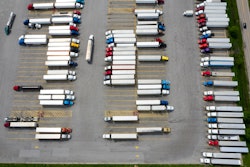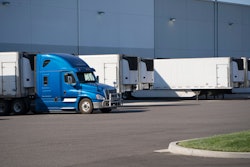Trucking expenses climbed to a new high in 2022 for the second year in a row, according to the 2023 update of American Transportation Research Institute's (ATRI) analysis of the operational costs of trucking. A record number of motor carriers participated in this year’s research, which analyzes a wide variety of line-item costs, operating efficiencies, and revenue benchmarks by fleet size and sector.
Marginal costs ballooned 21.3% last year over 2021 to $2.251 per mile, surpassing the $2 per mile mark for the first time in the history of ATRI’s operational cost report. Trucking's cost per mile has jumped 34% since 2021, and 2022's mark is 61 cents higher per mile than 2020. Costs per hour in 2022 totaled $90.78, also the highest in the report's history.
[Related: Report finds healing supply chain has been costly]
While inflation was a key driver of trucking costs last year, ATRI Research Associate Alex Leslie said it was not the primary driver.
"On an annual basis, consumer inflation was 6.5%, producer inflation was 6.4%, and core inflation about 6%. Setting fuel aside, which was a huge contributor to inflation but was itself closely tied to domestic and geopolitical issues, the cost of trucking rose at about twice that rate, by 12%," he said. "In several cost centers – which rose at an even greater rate – other factors discussed in the report likely played a bigger role, such as parts availability and supply chain impediments, the atypical truck market/demand and the competitive labor environment."
[Related: Rate pressure, operating costs continue to thwart a trucking recovery]
Though fuel was the largest driver of the spike in trucking operational costs last year (53.7% higher than in 2021), multiple other line-items also rose by double digits. Driver wages increased by 15.5%, to $0.724 per mile, reflecting the ongoing industry effort to attract and retain drivers. Driver benefits, however, remained stable in 2022. Truck insurance climbed barely 2% year-over-year.
Fleets that could get new trucks last year were paying up for them. Truck and trailer payments increased by 18.6% to $0.331 per mile as carriers paid higher prices, largely due to equipment impediments in the supply chains. Parts shortages and rising technician labor rates pushed repair and maintenance costs up 12%, to $0.196 per mile. After two years of rising truck-tractor age, respondents to ATRI's query reported an average truck age of 4.7 years old in 2022, down from 5.7 years old in 2021.
Lower freight rates shouldn’t have a big direct impact on marginal costs, yet Leslie said a significant drop in loads, which can accompany lower rates, can cause higher marginal costs by deteriorating economies of scale. Lower rates too can lead to inefficiencies – like more deadhead miles when settling for suboptimal loads – which increases total costs without increasing costs per mile. "Similarly, lower rates can lead to inefficiencies in fixed costs that we don’t track specifically in this report," he added. "Compared to last year, fixed costs in 2022 made up a higher percentage of revenue per mile in the truckload, refrigerated and flatbed sectors."
In an effort to keep costs down, motor carriers looked internally for improvements in operational efficiencies. Driver turnover, detention times and equipment utilization each improved across nearly every fleet size and sector during 2022. The average speed calculated for 2022 was 40.33 MPH, approximately 0.09 MPH faster than in 2021. Average speeds continue to be higher than the average speed in pre-pandemic reports.
The decade-long downward trend in the number of annual miles driven per truck continued its fall last year, dropping from 79,808 in 2021 to 78,863 in 2022.
Despite falling rates throughout the year, average operating margins were at least 6% in all sectors. While larger fleets’ average operating margins improved from 2021 to 2022, smaller fleets saw operating margins decline. Small fleets spent 7.7 cents more per mile than large fleets in 2022, according to the report – a gap 2.8 cents wider than 2021, but still less than in 2020 when small fleets spent 16.3 cents more than large fleets per mile.
Truckload carriers saw the highest rate of increase last year at 23.6%. LTL carriers’ 17.6% increase in total marginal costs was the lowest rate of increase among sectors in 2022, while the specialized sector – which includes flatbed, tanker, refrigerated, and intermodal carriers – saw an increase of 21.4%. All three of these totals are still well below the private fleets average of $2.50 per mile in the preceding year.













